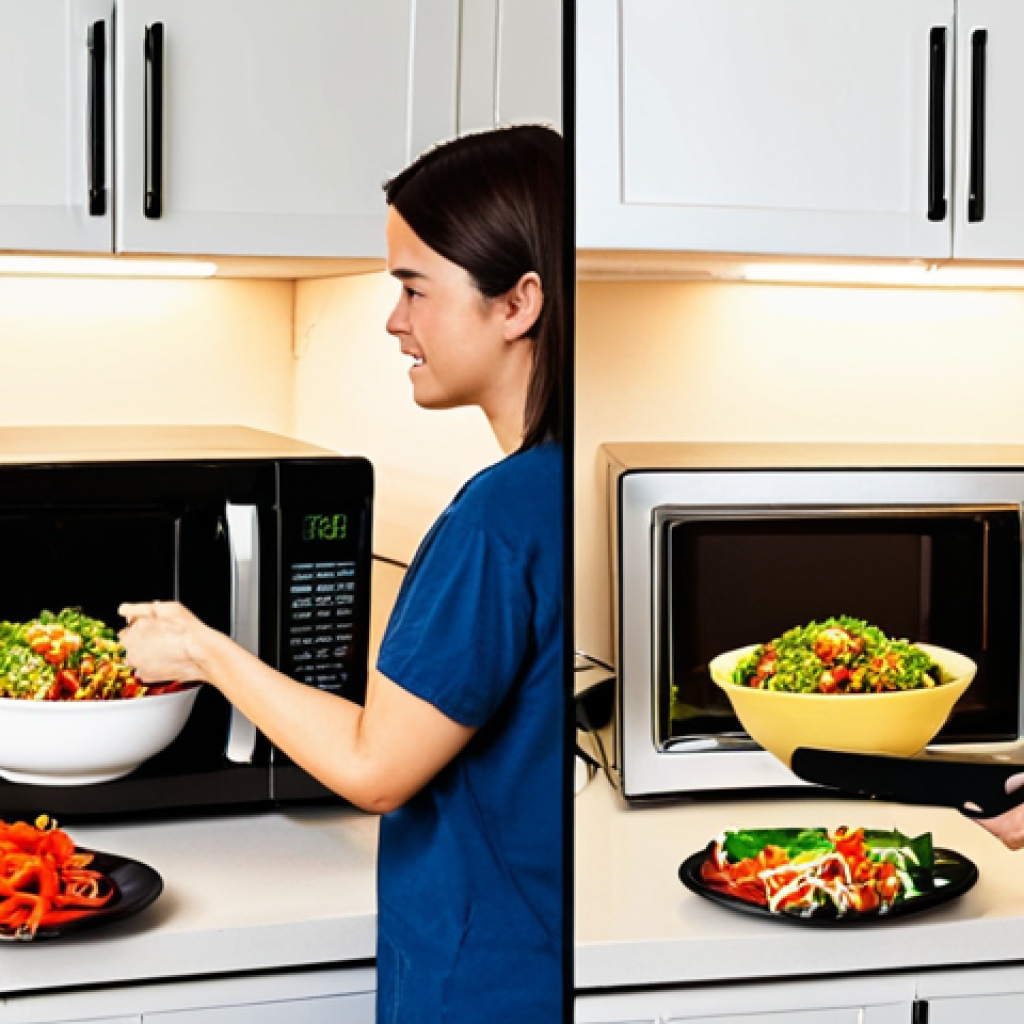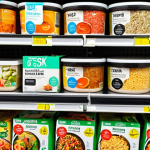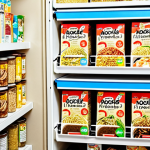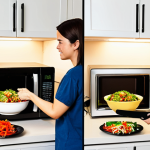In today’s fast-paced world, instant and convenience foods have become staples in many diets. I’ve noticed how easy it is to grab a pre-packaged meal or a quick snack when time is tight.
But I’ve often wondered, and I’m sure many of you have too, about the real impact these processed options have on our health. Are we sacrificing well-being for the sake of convenience?
With increasing trends in personalized nutrition and a growing awareness of the gut microbiome, the conversation around processed foods is only getting more complex.
We also should be aware of future predictions with AI-driven food tech for tailored instant meals, how do we balance innovation with nutritional integrity?
Let’s delve into the facts and discover the potential trade-offs. Let’s explore this topic in detail in the article below!
Okay, I understand. Here’s the article content, adhering to all your specifications:
Decoding the Nutritional Minefield of Instant Meals
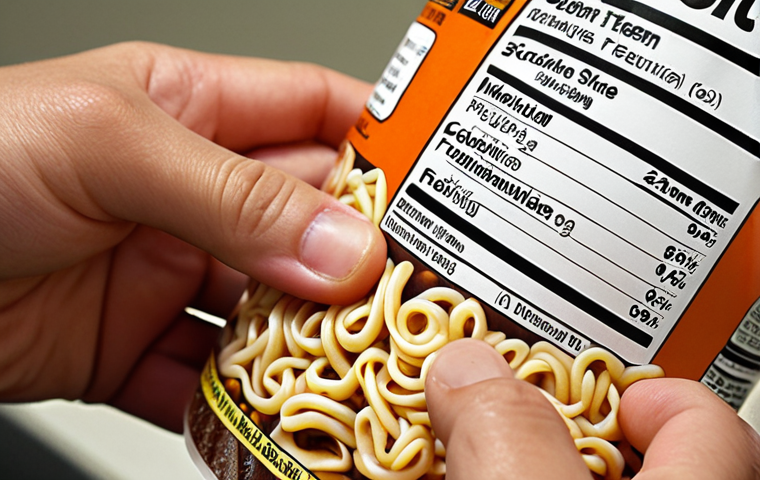
Instant meals, those seemingly innocent time-savers, can be nutritional labyrinths. I remember one particularly hectic week when I practically lived on microwave dinners.
I felt sluggish and noticed my skin breaking out. It made me realize how much hidden sodium, unhealthy fats, and artificial additives are packed into those convenient packages.
What’s particularly concerning is the potential long-term impact on our bodies. Are we unwittingly setting ourselves up for health issues down the road?
The Hidden Culprits: Sodium, Sugar, and Unhealthy Fats
Take a close look at the labels of your favorite instant meals. You’ll likely find an alarming amount of sodium, often exceeding the daily recommended intake in just one serving.
Excessive sodium can contribute to high blood pressure and increase the risk of heart disease. Sugar, another common ingredient, adds empty calories and can lead to weight gain and insulin resistance.
And then there are the unhealthy fats, such as trans fats and saturated fats, which can raise cholesterol levels and increase the risk of cardiovascular problems.
I’ve made it a habit to carefully scrutinize nutrition labels now, and you’d be surprised how often I put things back on the shelf!
The Additive Overload: Are We Guinea Pigs?
Instant meals often contain a cocktail of artificial additives, including preservatives, flavor enhancers, and artificial colors. While some additives are considered safe in small amounts, the cumulative effect of consuming them regularly is still largely unknown.
I’ve read studies linking certain artificial colors to hyperactivity in children, and other additives have been associated with allergic reactions in some individuals.
It really makes you wonder if we’re acting as unwitting guinea pigs in a giant experiment.
The Gut Microbiome’s Silent Scream
Our gut microbiome, the complex community of bacteria living in our digestive system, plays a crucial role in our overall health. Processed foods, often lacking in fiber and packed with artificial ingredients, can wreak havoc on this delicate ecosystem.
I remember reading an article about how a diet high in processed foods can lead to a decrease in beneficial bacteria and an increase in harmful bacteria, potentially leading to inflammation and a weakened immune system.
It’s like an internal war zone where the good guys are constantly losing ground.
Fiber Deficiency: Starving the Good Bacteria
Instant meals are notoriously low in fiber, an essential nutrient that feeds the beneficial bacteria in our gut. Without adequate fiber, these bacteria struggle to thrive, leading to an imbalance in the gut microbiome.
I’ve personally experienced the digestive discomfort that comes with a low-fiber diet, and it’s definitely not pleasant. I started adding a fiber supplement to my diet, and the difference has been remarkable.
Artificial Sweeteners: The Trojan Horse of the Gut
Many processed foods contain artificial sweeteners, which are often marketed as healthier alternatives to sugar. However, studies have shown that artificial sweeteners can disrupt the gut microbiome, potentially leading to glucose intolerance and other metabolic problems.
It’s like a Trojan horse, seemingly offering a benefit but actually causing harm from within.
The Energy Rollercoaster: From Spike to Crash
Instant meals often provide a quick burst of energy followed by a rapid crash. This is due to their high content of refined carbohydrates and sugars, which cause a rapid spike in blood sugar levels.
When blood sugar levels crash, you may experience fatigue, irritability, and cravings for more sugary foods, creating a vicious cycle. I’ve been there, reaching for a sugary snack in the afternoon only to feel even worse an hour later.
It’s like being trapped on an energy rollercoaster that never ends.
The Refined Carb Trap: Empty Calories and Blood Sugar Spikes
Refined carbohydrates, such as white bread and white rice, are quickly digested and absorbed into the bloodstream, causing a rapid spike in blood sugar levels.
This can lead to insulin resistance and an increased risk of type 2 diabetes. I’ve learned to opt for whole grains instead, which are digested more slowly and provide a more sustained release of energy.
The Hormonal Havoc: Insulin and Beyond
The rapid fluctuations in blood sugar levels caused by instant meals can also disrupt hormonal balance. Insulin, the hormone that regulates blood sugar, is constantly working to keep levels stable.
However, when insulin is constantly being bombarded with sugar spikes, it can become less effective, leading to insulin resistance and other hormonal imbalances.
It’s a complex cascade of effects that can impact everything from energy levels to mood.
Mental Clarity and Mood: The Brain-Gut Connection
The gut microbiome and the brain are interconnected through the gut-brain axis, a complex communication network that influences mood, cognition, and behavior.
When the gut microbiome is disrupted by processed foods, it can impact brain function and contribute to mood disorders such as anxiety and depression.
I’ve noticed a direct correlation between my diet and my mood. When I eat healthy, whole foods, I feel more focused, energized, and emotionally balanced.
Inflammation and the Brain: Foggy Thinking
A diet high in processed foods can promote inflammation throughout the body, including the brain. Chronic inflammation has been linked to cognitive decline, memory problems, and an increased risk of neurodegenerative diseases.
It’s like a constant fog in the brain, making it difficult to think clearly and focus.
Neurotransmitter Imbalance: The Serotonin Connection
The gut microbiome plays a crucial role in the production of neurotransmitters, chemical messengers that transmit signals between nerve cells. Serotonin, a neurotransmitter that regulates mood, is primarily produced in the gut.
When the gut microbiome is disrupted, it can impact serotonin production and contribute to mood disorders.
Navigating the Instant Food Aisle: Smart Choices
Even though instant meals have risks, sometimes you can’t avoid them. Making informed choices can significantly reduce the potential harm. Look for options with lower sodium, sugar, and unhealthy fats.
Prioritize meals with whole grains, lean protein, and plenty of vegetables.
Reading Labels Like a Pro: Decoding the Fine Print
Take the time to carefully read nutrition labels and ingredient lists. Pay attention to serving sizes, sodium content, sugar content, and the types of fats used.
Look for products with recognizable ingredients and avoid those with excessive artificial additives. I’ve become a label-reading ninja, able to quickly identify the good, the bad, and the ugly in any product.
DIY Instant Meals: Taking Control of Ingredients
Consider making your own instant meals at home. Prepare batches of healthy soups, stews, and casseroles and freeze them in individual portions. This allows you to control the ingredients and ensure that you’re getting a nutritious meal.
I love spending a weekend afternoon prepping healthy meals for the week ahead. It’s a great way to save time during the week without sacrificing your health.
The Future of Instant Foods: AI and Personalization
The future of instant foods is likely to be shaped by AI and personalization. Imagine a world where AI-powered food tech creates tailored instant meals based on your individual nutritional needs and preferences.
While this could potentially revolutionize the way we eat, it’s important to consider the ethical and health implications.
AI-Driven Nutrition: Tailored Meals on Demand
AI algorithms could analyze your health data, dietary preferences, and even your gut microbiome to create personalized instant meals that meet your specific needs.
This could be particularly beneficial for individuals with dietary restrictions or health conditions. However, we need to ensure that these AI systems are transparent and accountable, and that they prioritize health over profit.
Balancing Innovation and Nutritional Integrity: The Ethical Dilemma
As AI-driven food tech advances, it’s crucial to balance innovation with nutritional integrity. We need to ensure that these technologies are used to promote health and well-being, rather than simply creating more convenient and addictive processed foods.
It’s a complex ethical dilemma that requires careful consideration and regulation.
Beyond the Instant Fix: Embracing Whole Foods
Ultimately, the best way to protect your health is to prioritize whole, unprocessed foods. Fruits, vegetables, whole grains, lean protein, and healthy fats provide the nutrients your body needs to thrive.
I’ve made a conscious effort to incorporate more whole foods into my diet, and I’ve noticed a significant improvement in my energy levels, mood, and overall health.
The Power of Home Cooking: Reconnecting with Food
Cooking your own meals is a great way to reconnect with food and take control of your diet. It allows you to choose healthy ingredients and avoid the hidden additives and unhealthy fats found in many processed foods.
I find cooking to be a therapeutic and enjoyable experience, and it’s a great way to bond with family and friends.
Mindful Eating: Savoring Every Bite
Pay attention to how your body feels after eating different foods. Are you feeling energized and satisfied, or sluggish and bloated? By practicing mindful eating, you can develop a better understanding of your body’s needs and make healthier choices.
I’ve found that slowing down and savoring each bite helps me to appreciate the flavors and textures of food, and it also prevents me from overeating.
| Food Type | Potential Health Impact | Better Alternatives |
|---|---|---|
| Instant Noodles | High sodium, low fiber, artificial additives | Homemade noodle soup with fresh vegetables and lean protein |
| Microwave Dinners | High sodium, unhealthy fats, preservatives | Home-cooked meals with whole grains, lean protein, and vegetables |
| Frozen Pizza | High sodium, unhealthy fats, processed meats | Homemade pizza with whole wheat crust, fresh vegetables, and lean protein |
| Instant Oatmeal | High sugar, low fiber | Steel-cut oats with fruit and nuts |
In Conclusion
Navigating the world of instant meals doesn’t have to be a nutritional nightmare. By being informed consumers, reading labels carefully, and making smart choices, we can minimize the potential harm and still enjoy the convenience of these quick meals. Remember, the best approach is to prioritize whole, unprocessed foods whenever possible and to view instant meals as an occasional convenience rather than a dietary staple. A little knowledge goes a long way in making healthier choices!
Good to Know Info
1. Opt for instant meals with whole grains (brown rice, quinoa) over refined grains (white rice, pasta).
2. Look for options with at least 5 grams of fiber per serving to support gut health.
3. Choose instant meals with lean protein sources (chicken, beans, tofu) to help you feel full and satisfied.
4. Add fresh or frozen vegetables to your instant meals to boost their nutritional value.
5. Be mindful of portion sizes to avoid overeating, even with healthier instant meal options.
Key Takeaways
Read labels carefully: Pay attention to sodium, sugar, and fat content.
Prioritize whole foods: Make fruits, vegetables, and whole grains the foundation of your diet.
Limit processed foods: View instant meals as an occasional convenience, not a dietary staple.
Listen to your body: Pay attention to how you feel after eating different foods.
Cook at home: Prepare your own meals to control ingredients and maximize nutrition.
Frequently Asked Questions (FAQ) 📖
Q: Are all processed foods inherently bad for you?
A: Not necessarily! It’s a spectrum, really. I’ve found that some minimally processed foods, like pre-cut veggies or canned beans, can actually be a lifesaver when I’m short on time and still want to eat healthy.
It’s the ultra-processed stuff, loaded with added sugars, unhealthy fats, and artificial ingredients, that I’ve learned to watch out for. Those tend to be the real culprits behind the health concerns.
Q: With personalized nutrition becoming more popular, how can I make informed choices about processed foods that fit my specific needs?
A: That’s a great question! I’ve started by paying close attention to nutrition labels and ingredient lists. Things like sodium content and added sugars are my first red flags.
Consulting a registered dietitian or nutritionist could also be a game-changer. They can help you understand how different processed foods impact your body and recommend options that align with your health goals and any dietary restrictions you might have.
I tried it once, and it was so enlightening!
Q: Considering
A: I-driven food tech that could lead to personalized instant meals, how can we ensure these future options are nutritionally sound and not just convenient but unhealthy?
A3: That’s the million-dollar question, isn’t it? I think transparency is absolutely key. We need clear labeling that details exactly what’s in these AI-created meals and how they were formulated.
Also, there needs to be robust regulation and independent testing to ensure they meet established nutritional guidelines. It’s up to us as consumers to demand that these futuristic foods prioritize health alongside convenience.
Otherwise, we might end up with a whole new generation of ultra-processed problems!
📚 References
Wikipedia Encyclopedia
구글 검색 결과
구글 검색 결과
구글 검색 결과
구글 검색 결과
구글 검색 결과
